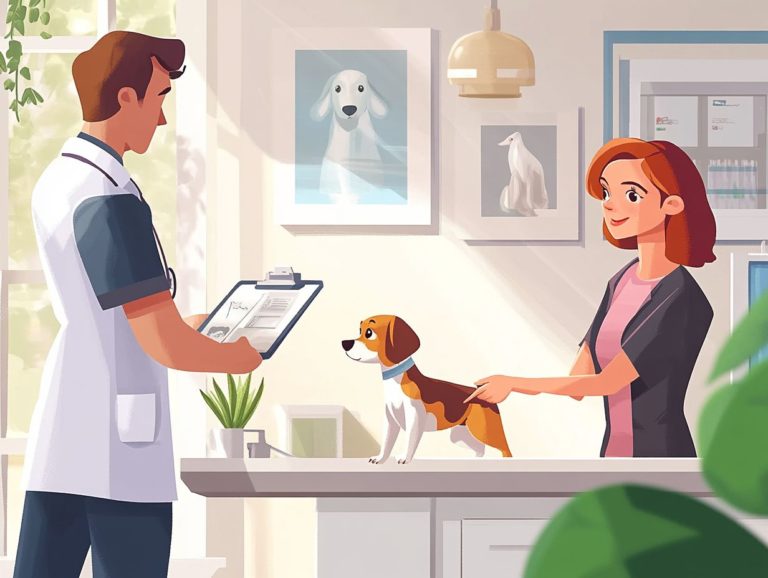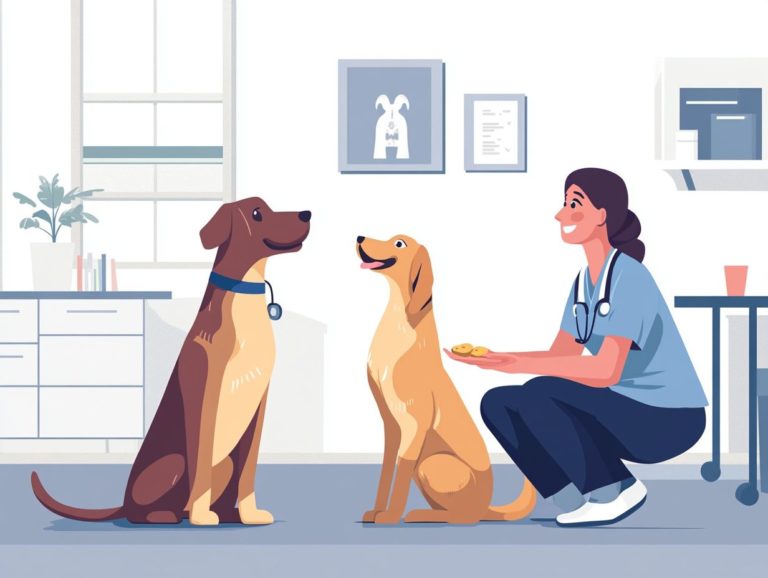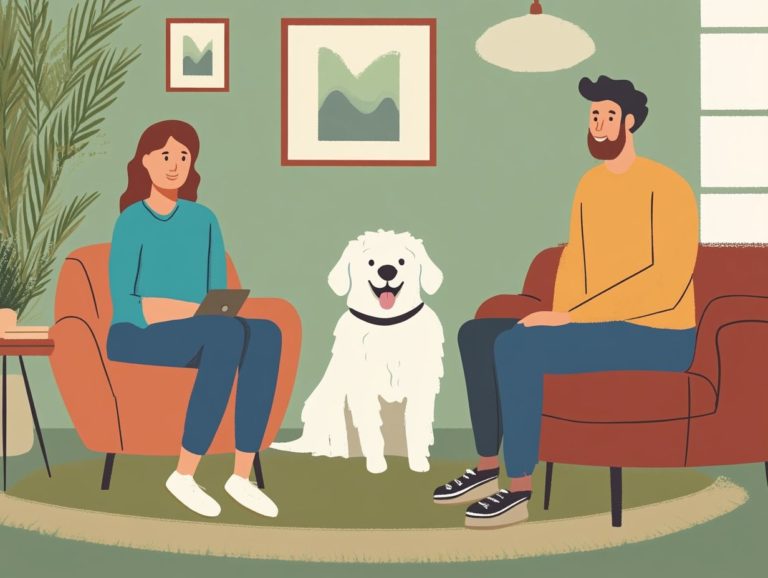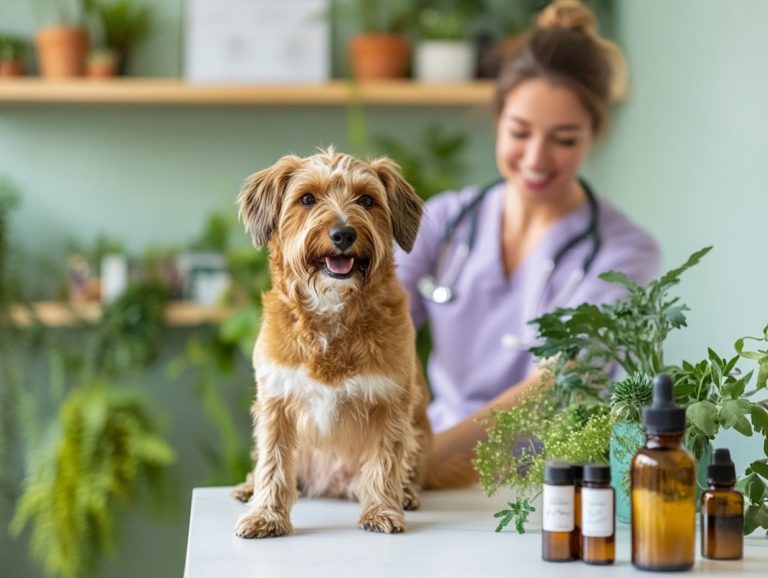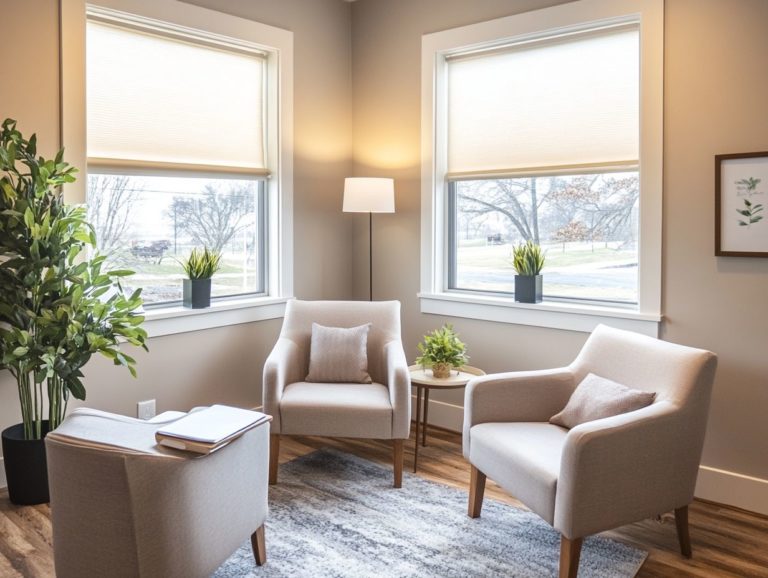The Role of Family in Pet Anxiety Consultations
Pet anxiety is increasingly concerning for many families, affecting the well-being of beloved furry companions.
Understanding the causes and symptoms of this condition is essential. Recognizing how family dynamics influence its management can also make a difference. By fostering a supportive environment and collaborating on treatment plans, you can significantly improve your pet s life.
This article dives into pet anxiety and will give you practical tips to create a calm home.
Contents
- Key Takeaways:
- Understanding Pet Anxiety
- The Importance of Family in Pet Anxiety Consultations
- How Family Dynamics Affect Pet Anxiety
- Involving Family in Treatment Plans
- Tips for Families to Help Anxious Pets
- Frequently Asked Questions
- What is the role of family in pet anxiety consultations?
- How can family members help alleviate their pet’s anxiety?
- Should family members be present during a pet anxiety consultation?
- What role does education play in managing a pet’s anxiety?
- Can family dynamics affect a pet’s anxiety?
- How can family members support their pet after a consultation?
Key Takeaways:
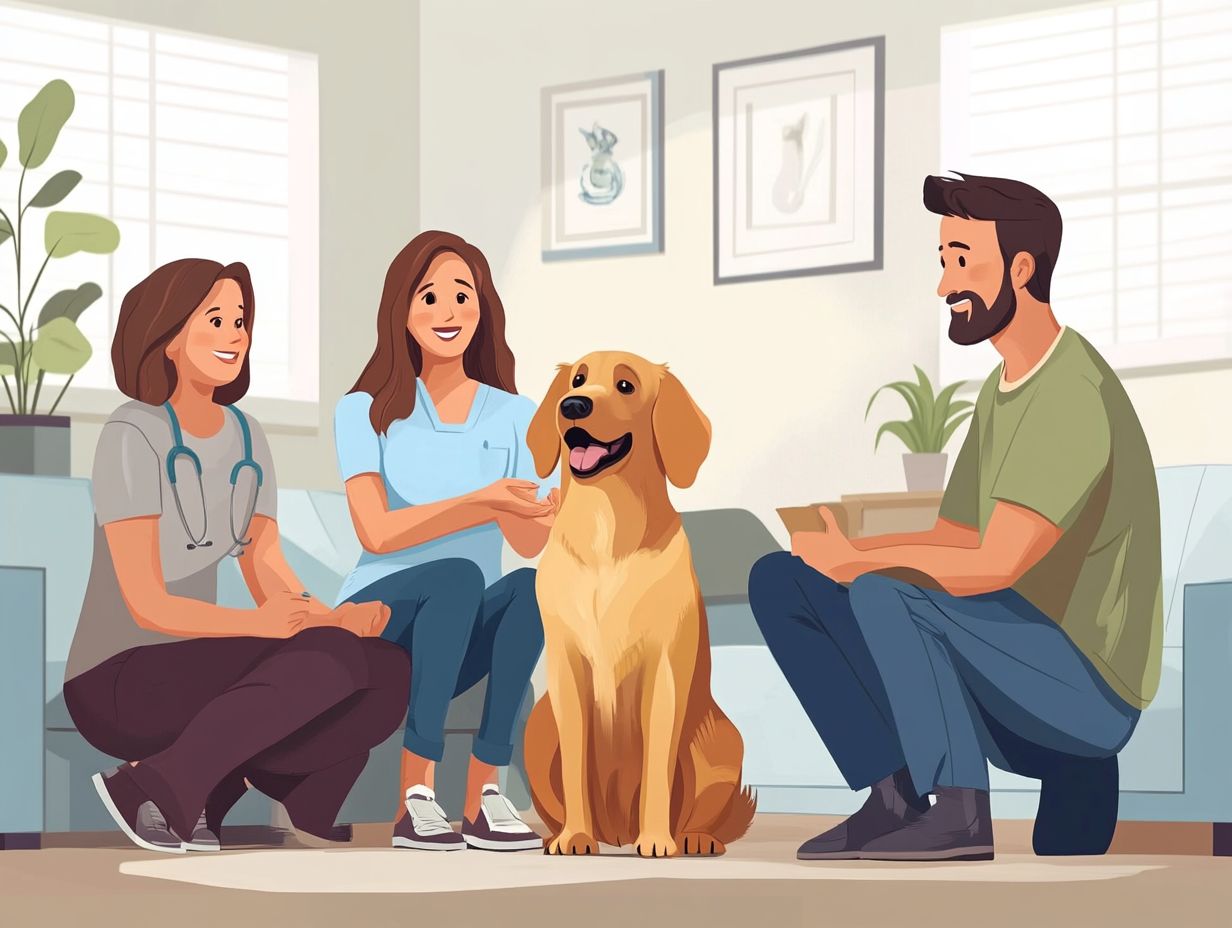
- Support and communicate effectively to help anxious pets during consultations.
- Consider how the household environment and dynamics can impact a pet’s anxiety levels during treatment plans.
- Collaborate and maintain consistency with family members to ensure successful anxiety treatment for pets, creating a harmonious environment.
Understanding Pet Anxiety
Grasping the nuances of pet anxiety is essential for any pet owner aspiring to enhance the quality of life for their companions. Anxiety can show up in various behaviors, affecting not just the mental health of pets but also their overall well-being.
You may notice common signs such as destructive behavior, heightened restlessness, shaking, and fluctuations in appetite. These signs can create a challenging atmosphere for both pets and their human families.
Recognizing these signs early helps you create a caring home and implement effective strategies to alleviate stress and anxiety in your pets, helping them cope better with their emotional turmoil.
Causes and Symptoms
The causes of pet anxiety can vary, from environmental changes to intrinsic behavioral issues. Recognizing the symptoms is crucial for effective management.
For example, loud noises like thunderstorms or fireworks can trigger distress in your pet, while being separated from you might make them feel helpless. Changes in routine such as moving to a new home or shifts in your household schedule can heighten anxiety in these sensitive companions.
Keep an eye out for signs like excessive drooling, repetitive licking, and even elimination issues, which may indicate your pet s struggle to cope. You ll find community resources and emotional support options, like pet therapy programs and local veterinary advice, invaluable as a pet owner looking to ease these anxiety-inducing situations.
The Importance of Family in Pet Anxiety Consultations
Family involvement is essential for tackling pet anxiety. By fostering a supportive environment, you can greatly enhance your pet’s mental health and overall well-being, as highlighted in the role of pet owners in the consultation process.
Engaging everyone in conversations about your pet s behavior and needs creates a unified strategy for managing anxiety. This collaboration provides insights into what your pet requires and promotes consistent training and routines to effectively alleviate anxiety symptoms.
Support and Communication
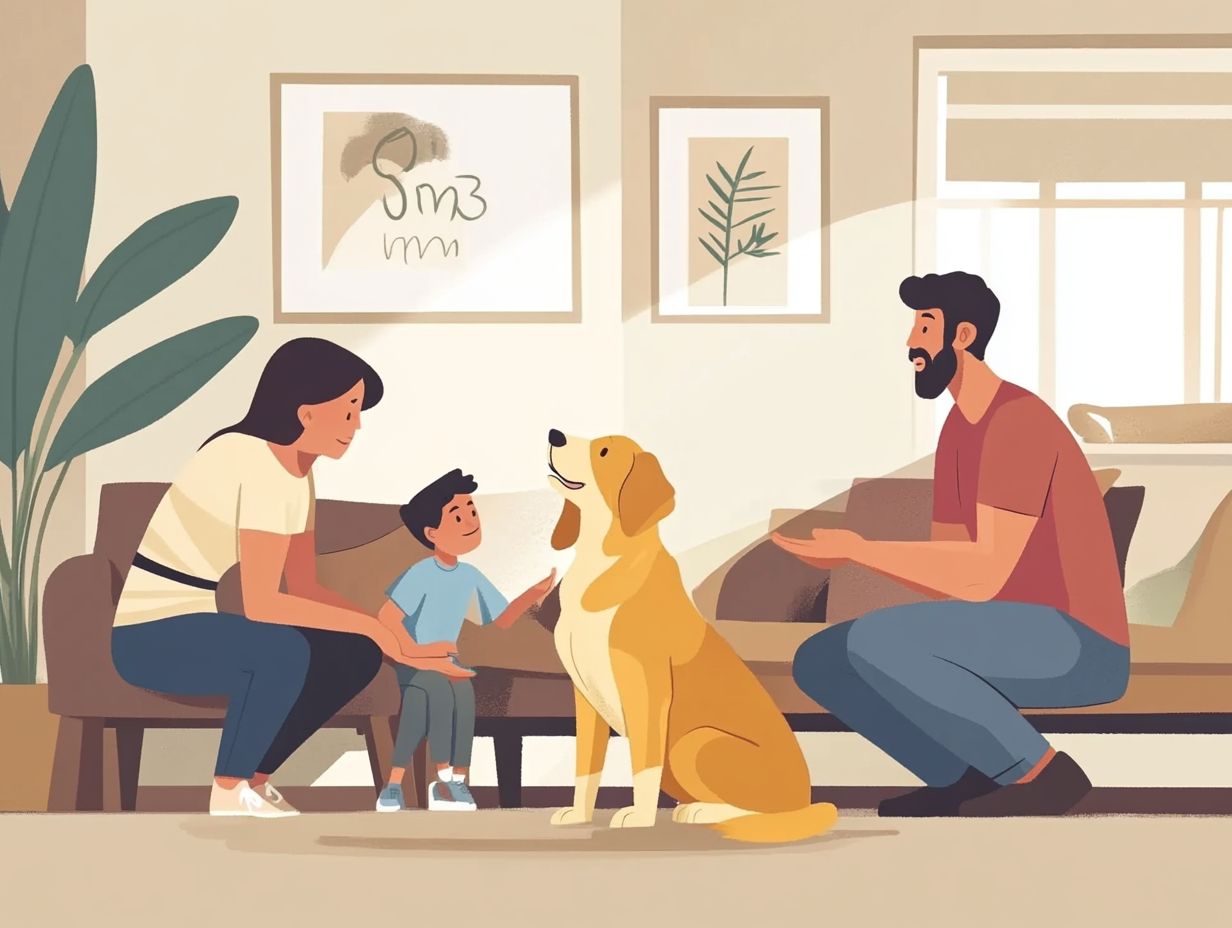
Effective support and communication within your family are crucial for managing your pet’s anxiety. By openly discussing each pet’s unique needs, you and your family members can establish a consistent routine that fosters a sense of security for your furry companions. Understanding the role of veterinary professionals in pet anxiety can also enhance your approach to ensuring their well-being.
This collective effort creates an environment where emotional support flourishes. Everyone can share insights and strategies that reinforce positive behaviors in your pets. For instance, using calming products like anxiety-reducing shirts becomes much more effective when everyone understands the importance of gradual desensitization (helping pets adjust slowly to stressors).
When each household member works together, your pet benefits not only from a stable routine but also from a nurturing atmosphere that promotes its overall well-being.
Start today! Share your story and help others create a calm environment for their pets.
How Family Dynamics Affect Pet Anxiety
Family dynamics play a crucial role in shaping your pet’s anxiety levels. They impact the environment your pet inhabits and the interactions they share with you. Understanding the role of pet trainers in anxiety management can further enhance the stability of a loving atmosphere, significantly boosting your pet’s emotional well-being.
Conversely, stressors like conflicts or erratic routines can heighten anxiety symptoms. By grasping these dynamics, you can take proactive measures to create a more serene environment for your pets, ultimately elevating their quality of life.
Impact of Household Environment
The household environment where your pet resides can significantly influence their emotional well-being and how easily they get anxious. It warrants careful consideration of the available space and noise levels.
Consider factors such as noise levels, available space, and your interactions with family members. These elements play vital roles in shaping your pet’s sense of comfort and security. For instance, loud sounds from televisions, music, or children playing nearby can amplify stress levels.
Creating a quiet retreat for your pet nurtures a sense of safety. Your approach to engaging with them whether through gentle play or establishing calm boundaries directly impacts their overall well-being.
By implementing soothing techniques like cozy hideaways, tranquil music, or even pheromone diffusers (devices that release calming scents), you can significantly enhance your pet’s living space. This leads to improved emotional stability and happiness.
Involving Family in Treatment Plans
Involving the entire family in treatment plans for pet anxiety is crucial for fostering collaboration and consistency in managing your pet’s emotional well-being. When everyone comes together to implement strategies, whether it’s establishing exercise routines or engaging in behavior training, you create a united front that reinforces positive changes in your pet. Additionally, understanding the role of veterinary advice in managing pet anxiety can further enhance these efforts.
This collective effort not only enhances the effectiveness of the treatment but also deepens the bond between you and your beloved animal.
Collaboration and Consistency
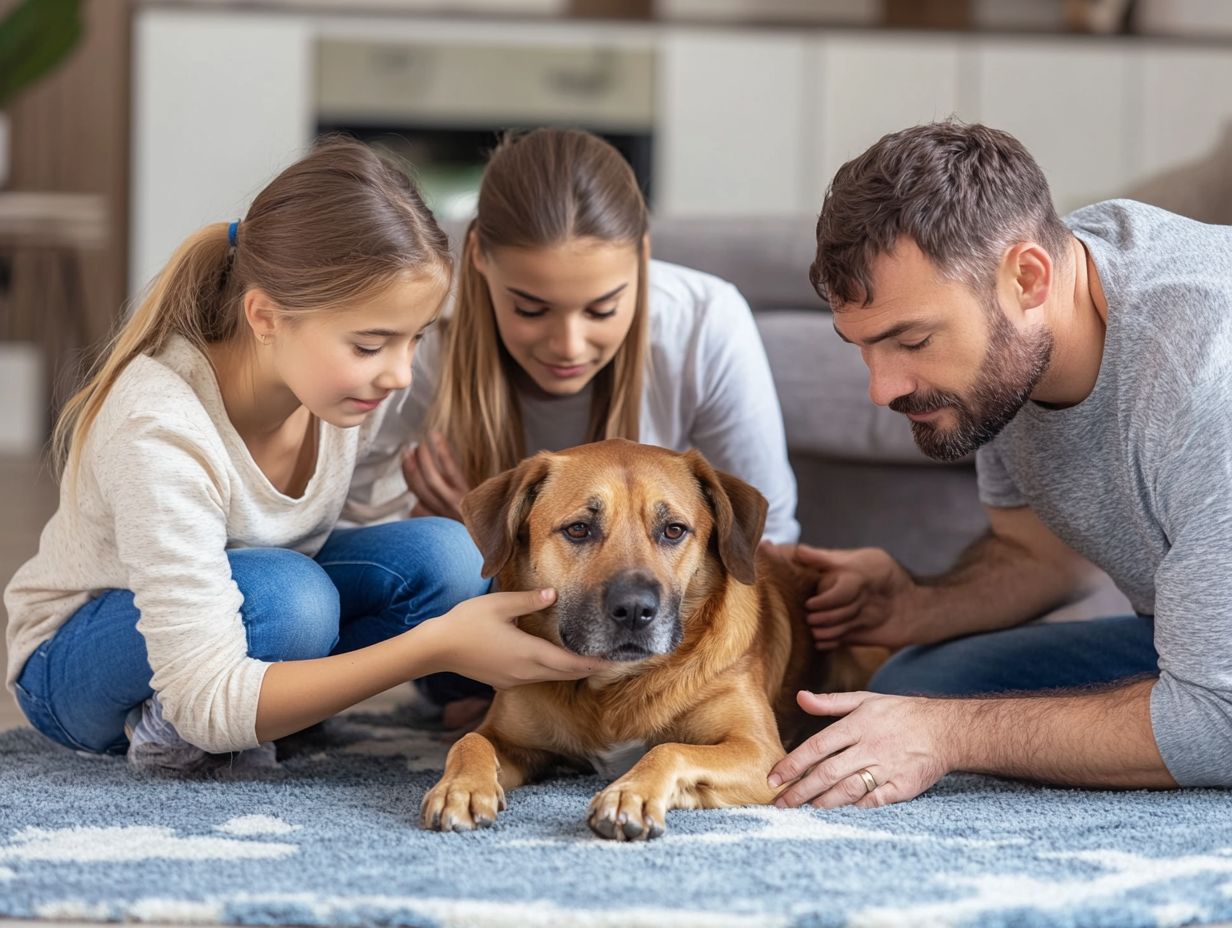
Collaboration and consistency among family members are crucial for effectively managing your pet’s anxiety, including understanding the role of genetics in pet anxiety.
To achieve this, establish a unified approach to training methods and routines. Ensure that everyone is aligned with the same commands and techniques. Regular family meetings can facilitate open communication about each member’s experiences and challenges, helping you identify what works best for your anxious pet.
It s also important to leverage available resources like online training videos, articles, and local workshops that provide valuable insights into addressing specific behaviors. Consulting with veterinary behavioral specialists can further enrich your understanding, offering tailored advice that complements your family s efforts. This ultimately creates a harmonious environment for your furry friend.
Tips for Families to Help Anxious Pets
You can adopt a range of strategies to ease anxiety in your pets. This fosters a more serene and supportive environment. By attuning yourself to your pet s unique needs, you can establish routines that blend calming exercises, engaging activities, and positive reinforcement techniques.
These practices not only alleviate anxiety symptoms but also deepen the connection between you and your pet. Ultimately, they enhance their overall well-being.
Creating a Calming Environment
Creating a calming environment for anxious pets is crucial in reducing their stress levels and enhancing their emotional well-being.
Incorporate quiet spaces where your pets can retreat. These serene spots act as a peaceful retreat amidst the daily chaos of life. Providing comfortable resting areas with soft bedding can significantly boost their sense of security, making them feel right at home.
Establishing safe havens for your pets is equally important. These designated areas allow them to escape and feel protected from overwhelming stimuli. Recognizing the signs of anxiety and adjusting their surroundings accordingly is essential.
By fostering a peaceful atmosphere, you benefit your pets and enrich the overall living space, creating harmony for everyone in the household.
Positive Reinforcement Techniques
Positive reinforcement techniques are essential in training anxious pets, as they reward the behaviors you want to see and foster trust between you and your furry companions.
By concentrating on actions that promote calmness and comfort, you can cultivate a nurturing environment that significantly reduces stress. For example, when your pet remains calm in a potentially anxiety-inducing situation, offering treats or praise reinforces that behavior, encouraging them to respond in the same way in the future.
You can explore calming aids like special toys or soothing music, pairing them with positive rewards when your pets engage quietly.
Regular exercise and a consistent routine can greatly diminish anxiety levels and promote well-being, making positive reinforcement an invaluable strategy for nurturing an emotionally healthy pet life.
Frequently Asked Questions
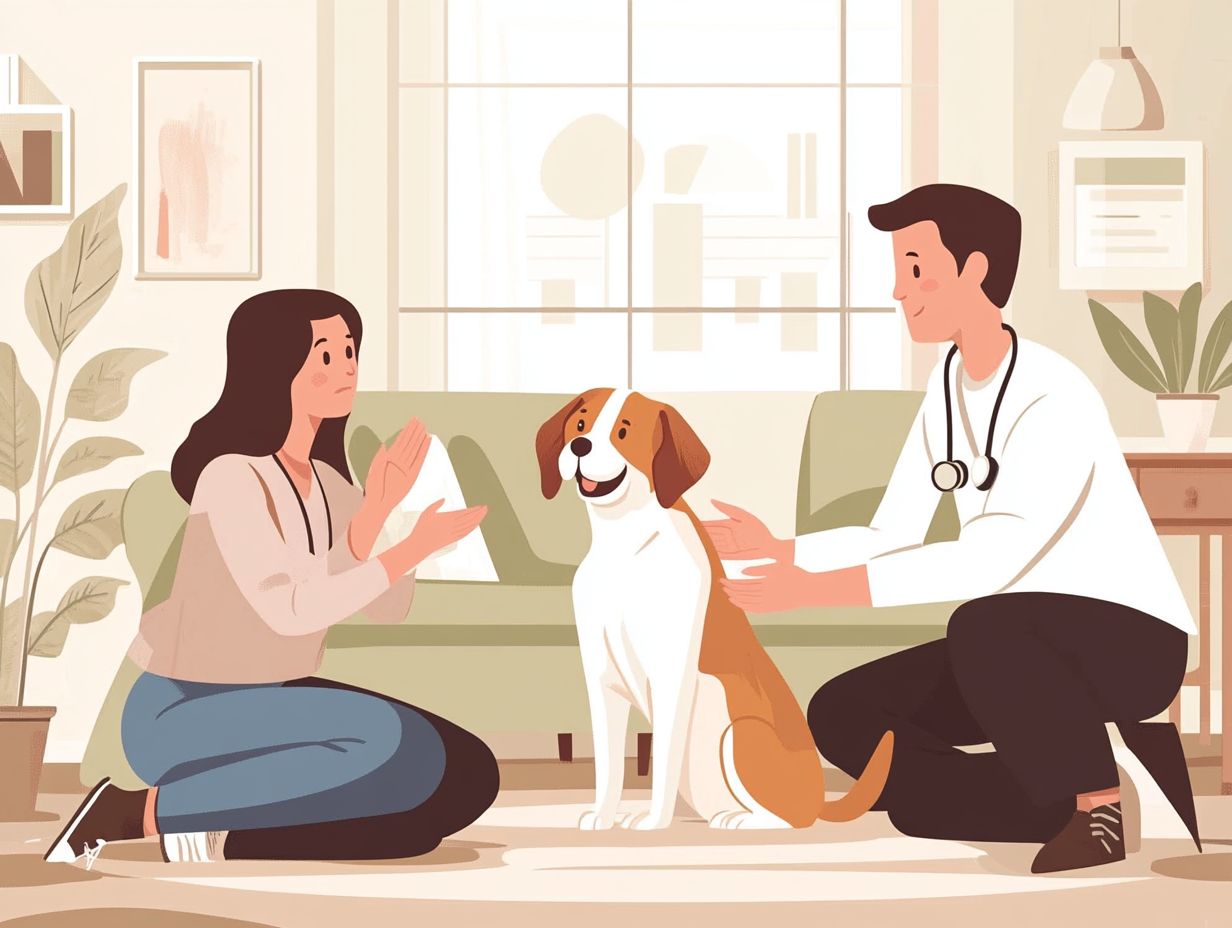
-
What is the role of family in pet anxiety consultations?
The family plays a crucial role in understanding and managing a pet’s anxiety. They are often the first to notice changes in behavior, such as hiding or panting, and can provide valuable information to the veterinarian during pet anxiety consultations.
-
How can family members help alleviate their pet’s anxiety?
Family members can help by creating a calm and structured environment for their pet. This includes providing a safe space, a consistent routine, and positive reinforcement for good behavior, which is especially important in managing aggression and anxiety.
-
Should family members be present during a pet anxiety consultation?
Yes, family members should be present during consultations as they can provide important insights into the pet’s behavior, triggers, and daily routine. This allows the veterinarian to create a personalized treatment plan for the pet, enhancing the relationship between humans and animals.
-
What role does education play in managing a pet’s anxiety?
Education is essential in managing a pet’s anxiety as it helps family members understand the causes, symptoms, and treatments for anxiety. This knowledge can empower them to make informed decisions about pet ownership and promote their pet’s overall wellness.
-
Can family dynamics affect a pet’s anxiety?
Yes, family dynamics can significantly impact a pet’s anxiety. Changes in the household, such as new family members, can trigger or worsen anxiety in pets. It is essential for families to work together to create a calm and stable environment for their pet, which may include using calming shirts or other tools from Fera Pet Organics.
-
How can family members support their pet after a consultation?
Family members can support their pet by following the treatment plan recommended by the veterinarian and providing a consistent and positive environment. They can also monitor their pet’s improvement and communicate any changes or concerns to the veterinarian, ensuring that the pet remains in a stimulating and calming environment.
Together, you can create a happier, healthier life for your pet!

